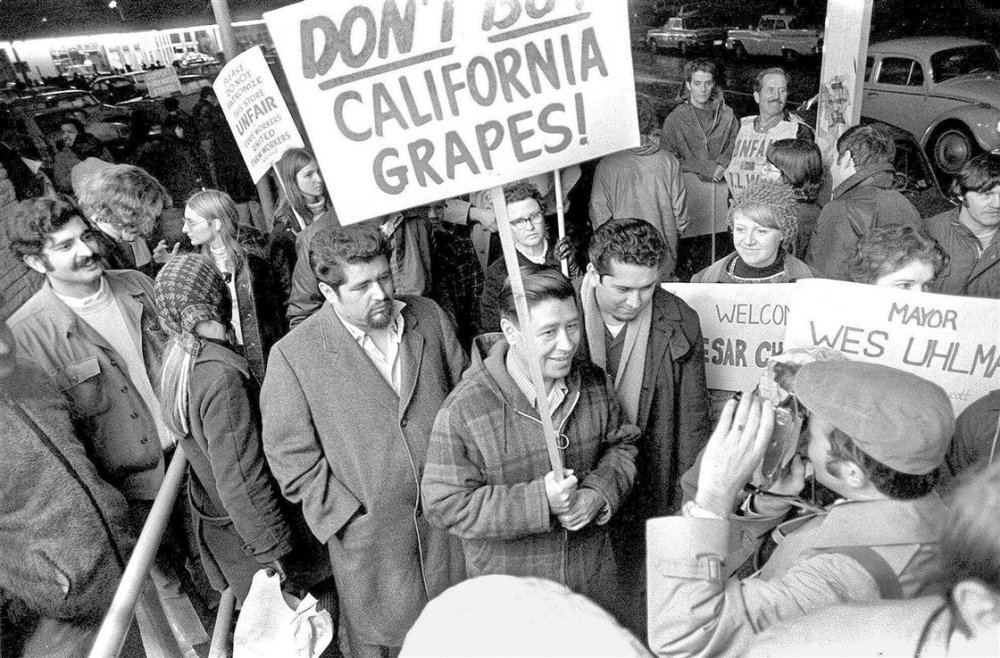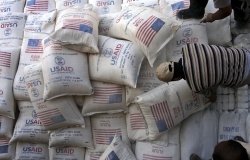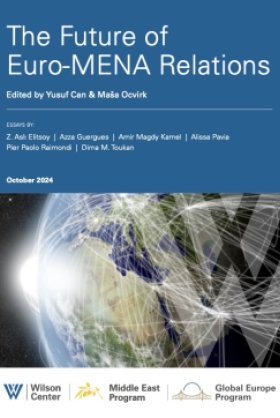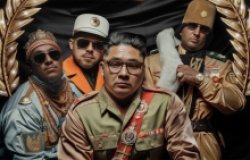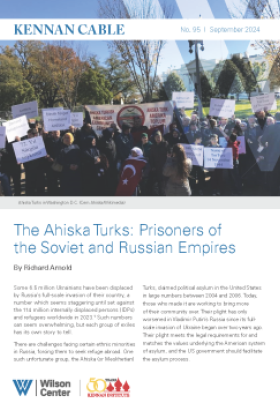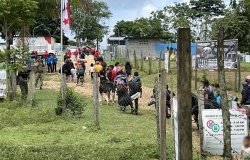Mexican Braceros and US Farm Workers
The Bracero program refers to agreements between the US and Mexican governments that allowed Mexican workers to fill seasonal jobs on US farms. Both the 1917-21 and the 1942-64 Bracero programs that were begun in wartime and continued after WWI and WWII ended. Second, there were gaps between program regulations and workplace realities that became apparent over time and contributed to US decisions to end both programs.
The third major Bracero impact reinforced the adage that there is nothing more permanent than temporary workers. US farm employers adjusted to the availability of Braceros and planted more crops that relied on low-cost hand labor. Meanwhile, Mexicans workers became accustomed to higher wage US jobs, setting the stage for large-scale Mexico-US migration after the legal guest worker programs ended. Over 10 percent of the 130 million people born in Mexico live in the US, and some of the large-scale Mexico-US migration in the 1980s, 1990s, and 2000s can be traced to the migration networks established during earlier Bracero programs.
WWI Braceros
The first Bracero program allowed farmers in the western US to recruit and employ “otherwise inadmissible aliens” to work on farms (and railroads) beginning in May 1917; the US entered WWI in April 1917. The availability of these first Mexican Braceros, who were employed mostly to thin, weed, and harvest sugar beets, encouraged growers to plant more sugar beets.
The US Department of Labor required farmers who wanted to employ Braceros to obtain certification from their local Employment Service office that there were not sufficient US workers to fill the jobs they offered. The written contracts farmers had with Braceros offered the same wages that were paid “for similar labor in the community in which the admitted aliens are to be employed.” Braceros received six-month work permits that could be renewed once, and had to leave the US at the end of their contracts “at no cost to the US government.” However, many farmers did not pay return transportation, and some Braceros stayed in the US.
The 1917-21 Bracero program ended with mixed results. Farmers wanted Mexican workers, and the Mexican government wanted jobs for peasants who had been displaced during the 1910-17 civil war. However, some Braceros returned to Mexico with few savings because of debts incurred to the stores located in employer-operated housing camps. Braceros often faced discrimination, as with “no dogs or Mexicans” signs in some rural stores and restaurants. After the program ended in 1921, Mexicans continued to enter the US illegally, and the establishment of the Border Patrol in 1924 did little to impede their movement.
Source: https://www.loc.gov/exhibits/civil-rights-act/images/cr0024_enlarge.jpg
The Great Depression
The 1930s were marked by farm labor surpluses. As the unemployment rate rose toward 25 percent, some 300,000 Mexicans who had arrived in the 1920s, as well as their US-born children, were repatriated or returned to Mexico between 1930 and 1933 by state and local police in California and other states to open jobs for US workers. The Mexican government cooperated with the repatriation, hoping to benefit from the return of citizens who had gained agricultural and industrial expertise in the US.
California had 5.7 million residents in 1930, and Dust Bowl migration brought 1.3 million Dust Bow migrants known as Okies and Arkies to the state, most between 1935 and 1940, increasing California’s population by 25 percent. Steeped in the Jeffersonian family farm ideal, some Dust Bowl migrants approached California farmers and asked for work, expecting to be treated as hired hands who would live and work alongside large fruit and vegetable farmers and later become fruit and vegetable farmers themselves.
Dust Bowl migrants soon learned that California’s commercial farms hired crews of seasonal workers when they were needed, not year-round hired hands. Many Dust Bowl migrants wound up in tent camps known as Hoovervilles, named for ex-President Hoover who many believed had done too little to cushion the effects of the Depression.
Dust Bowl migrants were US citizens, and there was concern that Hoovervilles could become a breeding ground for Communists and others who wanted to organize Americans to support major changes to the socio-economic system, prompting the creation of federally funded farm worker housing centers, one of which served as a backdrop for John Steinbeck’s 1939 novel, The Grapes of Wrath.
The Grapes of Wrath film (1940)
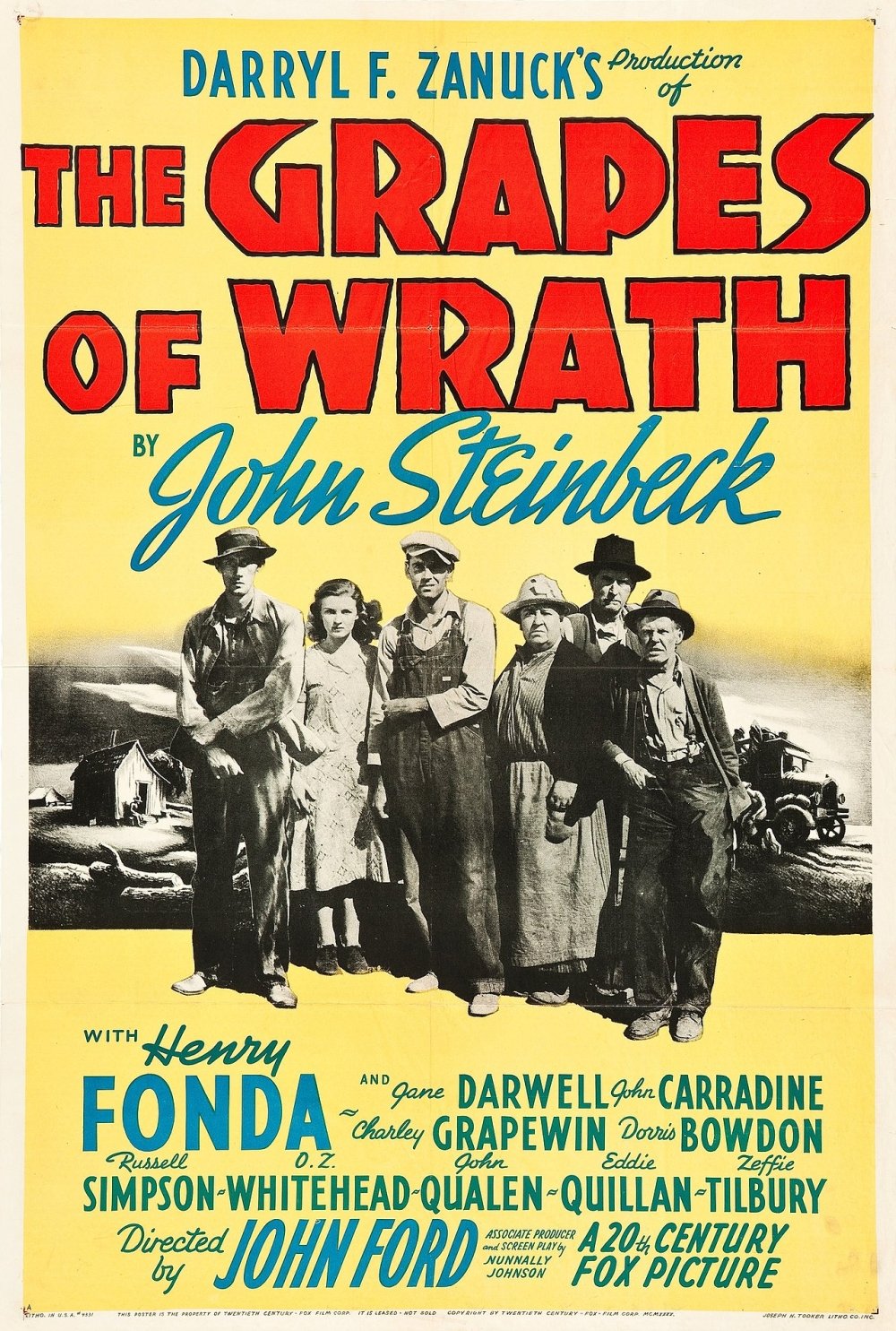
Wikipedia
The late 1930s were unique in California farm labor history because the majority of seasonal farm workers were white US citizens. Senator Robert La Follette, Jr. (R-WI from 1925-46) chaired the Senate’s Subcommittee of the Education and Labor Committee Investigating Violations of Free Speech and the Rights of Labor (1936-1941) and held hearings to document how employers tried to prevent workers from forming unions.
La Follette concluded that California agricultural associations enlisted state and local law enforcement to hold down wages and to prevent farm workers from organizing unions. La Follette recommended that federal labor relations and protective labor laws that covered nonfarm private sector workers be extended to cover farm workers, or at least those who were employed on farms that received federal subsidies.
World War II
Instead of farm labor reforms, the outbreak of WWII allowed many Dust Bowl migrants to join the military or find nonfarm jobs, prompting farmers to complain of labor shortages and the US and Mexican governments to launch another Bracero program that began to admit Mexican workers in September 1942. This wartime Bracero program was expected to expand quickly and then shrink as soldiers returned. However, the program expanded slowly, to a 62,200 in 1944. The number of Braceros shrank to less than 20,000 in 1947, but illegal immigration surged.
During WWII, there was about one apprehension of an unauthorized Mexican for each Bracero admission. By 1947, there were 10 apprehensions for each admission, as both farmers and workers learned that they could save money by finding each other outside the legal guest worker system. Farmers realized they did not have to pay transportation costs for unauthorized workers, and US workers and unauthorized Mexicans did not have to be paid the $0.30 an hour minimum wages stipulated in Bracero contracts. Mexicans who arrived illegally avoided the bribes that often had to be paid to gain entrance to Bracero recruitment centers. Legal immigration from Mexico peaked in 1956.
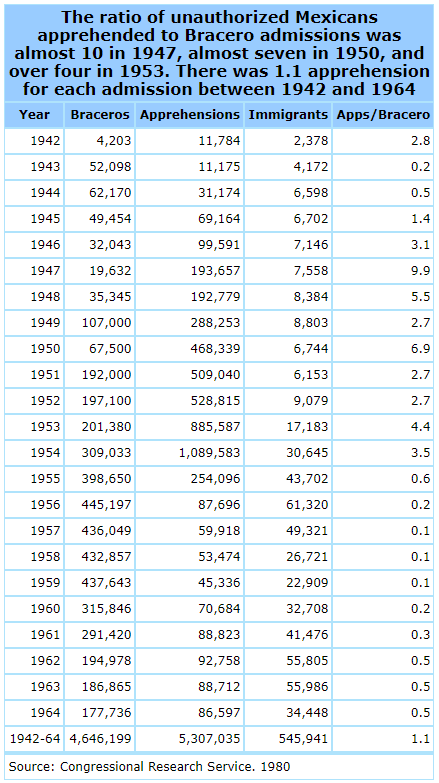
Migration Dialogue
President Truman’s Commission on Migratory Labor studied the effects of wartime Braceros on the wages of US workers and concluded that Braceros had “depressed farm wages and, therefore, had been detrimental to domestic labor.” The Commission was especially critical of what it called “drying out of wetbacks,” the process of apprehending unauthorized Mexicans, returning them to the Mexico-US border, and admitting them with Bracero contracts and visas. Between 1947 and 1949, 74,600 Mexican Braceros were admitted and “142,000 wetbacks already in the US were legalized by being put under contract.”
Like the LaFollette Committee, the Truman Commission recommended that farm workers be covered by the Fair Labor Standards Act that establishes minimum wages and the National Labor Relations Act that gives workers union organizing rights. The Commission recommended sanctions on US employers who hired unauthorized workers and efforts to persuade US farmers to employ more US workers rather than more Braceros.
Congress rejected the Commission’s recommendations and instead enacted the Migratory Labor Agreement (PL 78) in July 1951, which is often considered the Bracero program because most Braceros arrived under its auspices. President Truman wanted PL 78 to require the same wages and conditions for US and Bracero workers, but Congress rejected his recommendation and required a minimum wage only for Braceros. Congress also rejected employer sanctions via the infamous Texas proviso that made "illegally harboring or concealing an illegal entrant" a felony, but employing unauthorized workers was neither harboring or concealing them.
Bracero admissions rose rapidly, from 192,000 in 1951 to a peak 445,000 in 1956.
The PL 78 Bracero program had the same major features of earlier Bracero programs and the current H-2A program. Farm employers who wanted to hire Braceros needed certification from DOL that they had tried and failed to find US workers while offering prevailing wages. Furthermore, DOL had to certify that the presence of the Bracero workers would not adversely affect similar US workers.
The federal government in the mid-1950s tried to persuade farm employers to hire legal Braceros and tried to remove unauthorized Mexicans from the US. DOL made it easier for farmers to be certified to employ Braceros, while General Joseph Swing led Operation Wetback, which involved Border Patrol agents and state and local police searching for and removing over 1.1 million unauthorized Mexicans in 1954.
Bracero workers dominated the harvesting of many commodities in the mid-1950s. Over half of the workers harvesting California asparagus, lemons, lettuce, and tomatoes between 1956 and 1958 were Braceros. In 1959, the employment of Braceros peaked at 275,000 in October, when 137,000 or half of all Braceros were employed in Texas, mostly to harvest cotton. By 1962, peak Bracero employment had fallen to 106,000 in September, including 72,000 or 68 percent in California.

Migration Dialogue
Bracero employment peaked in 1959 at 275,000 in October. Half of all Braceros were in Texas to harvest cotton.

Migration Dialogue
Bracero employment peaked in 1962 at 106,000 in September. Two-thirds of Braceros were in California to harvest fruits and vegetables.
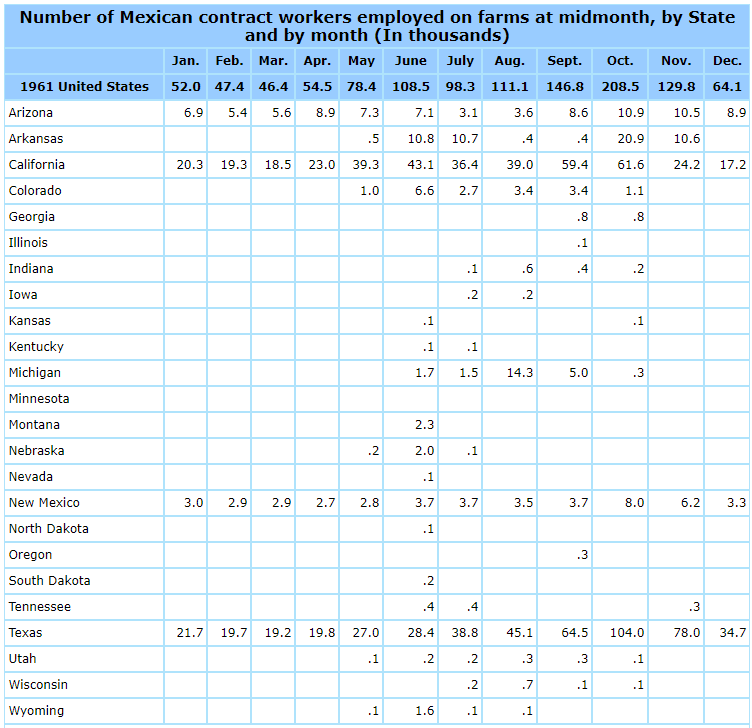
Migration Dialogue
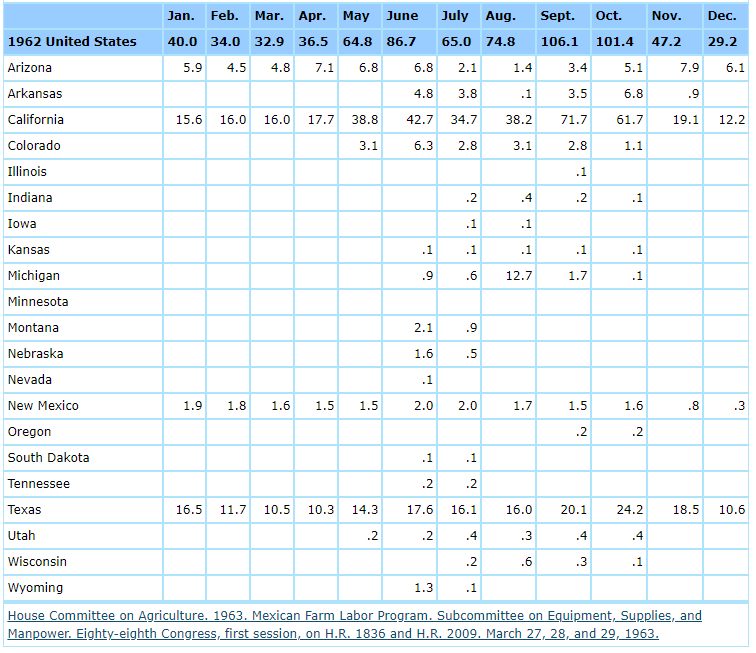
Migration Dialogue
Legacies
The Bracero program was ended for many reasons, including the mechanization of cotton and sugar beet harvesting, economic evidence that the presence of Braceros reduced the wages of US farm workers, and political agreement that ending competition in the fields between Braceros and US farm workers would benefit Mexican Americans. The US Department of Labor, under Presidents Eisenhower and Kennedy, concluded that farm wages did not rise in areas where Braceros dominated the farm workforce, that is, Braceros were adversely affecting US farm workers.
The Mexican government and US growers in the early 1960s pleaded for the Bracero program to continue. Congressional hearings featured testimony that predicted US farmers would be forced to follow their workers to Mexico in order to produce fruits and vegetables for Americans.
The Bracero program affected the evolution of the Mexican rural economy and US agriculture. Some rural Mexicans move toward the US border to increase the chance that they would be selected by US employers, leaving tens of thousands of Mexicans living along Mexico’s northern border in the mid-1960s and prompting the creation of the maquiladora program in 1965 so that US investment in assembly factories could provide jobs for ex-Braceros in Mexico.
At a time when Mexico had a protectionist and inward-oriented trade policy, US factories on the Mexican-side of the Mexico-US border could assemble goods to export and pay taxes only on the value added in Mexico, which was mostly Mexican wages. The maquiladora program was slow to expand and, when it did, border-assembly factories hired mostly young women, not the older men who had worked on US farms. Instead of providing jobs for ex-Braceros, maquiladoras drew even more Mexicans toward the US border.
In the US, the availability of Braceros encouraged labor-intensive agriculture to expand in the western states far from US consumers who were demanding more fruits and vegetables amidst a baby boom and an interstate highway system that facilitated the long-distance trucking of produce. California displaced New Jersey as the US garden state.
The end of the Bracero program led to a sharp jump in farm wages, as exemplified by the 40 percent wage increase won by the United Farm Workers union in 1966 in its first table grape contract, raising the minimum wage under the contract from $1.25 to $1.75 an hour at a time when the federal minimum wage was $1.25. Farmers who had been accustomed to Braceros accelerated efforts to mechanize hand tasks. In some commodities and areas, personnel managers developed smaller and more professional crews of farm workers who had higher earnings and were employed longer, as with the Coastal Growers Association in Ventura county.
The UFW won a 40 percent wage increase in its first grape contract in 1966.
However, the networks created by two decades of legal and unauthorized Mexico-US migration were well positioned to fuel more migration in the 1970s, as US farm wages rose and the Mexican peso was devalued. Under the 1942-64 Bracero programs, between 1.5 million and two million Mexicans gained experience working legally in US agriculture, and at least 100,000 became legal immigrants when their employers sponsored them for immigrant visas in the late 1960s. In the 1970s, these green-card commuters who maintained homes in Mexico and worked seasonally in the US were well positioned to recruit friends and relatives to fill US farm jobs.
Some 65 years later, the Bracero program remains controversial. There are over 20,000 scholarly books and articles that examine how the Bracero program operated and its effects. Most emphasize the gaps between program promises and realities that allowed US employers to take advantage of Mexican Braceros. Many proposals for new farm guest worker programs in the 1980s and 1990s began with the announcement that a particular proposal was not a new Bracero program.
Economic studies of Bracero program effects often reflect author beliefs about the effects of low-skilled migration generally. Most 1950s and 1960s studies concluded that Braceros depressed the wages of US farm workers, and these conclusions helped to persuade Congress to end the program. More recent studies conclude that ending the Bracero program did more to accelerate labor-saving mechanization than to draw US workers into the fields, which could happen again if the unauthorized workers who are up to half of US farm workers in 2020 are removed and not replaced by legal guest workers.
Sources:
Assembly Legislative Reference Service. 1963. Mexican national labor in California agriculture.
Migratory Labor in American Agriculture (Truman Commission). 1951.
Documents & Downloads
About the Author

Philip Martin

Mexico Institute
The Mexico Institute seeks to improve understanding, communication, and cooperation between Mexico and the United States by promoting original research, encouraging public discussion, and proposing policy options for enhancing the bilateral relationship. A binational Advisory Board, chaired by Luis Téllez and Earl Anthony Wayne, oversees the work of the Mexico Institute. Read more


